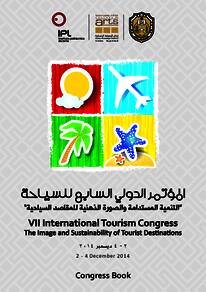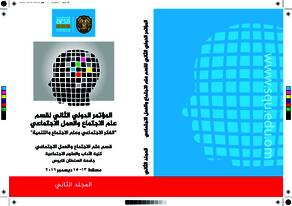Document
Textual and visual representation of Oman : moving beyond veils and khanjars : marketing a literary Oman.
Contributors
Other titles
The Image and Sustainability of Tourist Destinations
Publisher
College of Arts and Social Sciences, Sultan Qaboos University.
Gregorian
2014-12
Language
Arabic
English abstract
This paper discusses the marketing of Oman tourism and its relationship to discourses of heritage. Marketing discourses aim to attract visitors through the use of images and text. Oman's projected tourism imagery, aimed at an international audience, is often governed by romantic notions of Gulf Arab cultural specificities and narratives frozen in time. Orientalist tropes still exercise, with the complicity of Omanis, a complex hold over the representation, the selection and consumption of the Omani tourist attractions, typically mirroring the accounts of 19th C British colonial travellers. There is little reference to the present, the urban, the industrial, the intellectual, contemporary art and literature. The cultural heritage of a people encompasses the works of their artists, architects, composers, writers and philosophers, the works of unknown authors that have become an integral part of the people's heritage, together with all the values which give life meaning (Declaration, General Assembly of the World Tourism Organization WTO, 28 June 1985). Traditional culture in Oman is certainly a key marketing edge to cultural tourism but how can it be managed in such a way that it does not exist as if in a time warp that reinforces fosselized stereotypes? Building on theories of cultural appropriation examined by Edward Said in Orientalism, this paper begins with an exploration of an Orientalist discourse that forms the framework by which a specific 'exotic' and 'mysterious' Oman, is marketed and consumed. The empirical basis of this discussion is a content analysis of two travel guides, domestic and overseas travel brochures, visuals decorating the walls of hotels, two websites, and representative examples from the British and American media. This is complemented by thirty questionnaires distributed at random at Shangri La and an in depth interview with two Irish visitors at Intercontinental Hotel (Muscat, December 2014). The second section reviews briefly the changing nature of contemporary tourism and new sociological approaches to its study and the rise of alternative creative practices in Tourism as part of the rise of creative Tourism, that would promote not vacant signs of an alien and romanticized but a living Omani heritage that challenges stereotypical Western Arabian Nights forms of commodification.
Member of
Resource URL
Arabic abstract
تناقش هذه الورقة تسويق السياحة العمانية وعلاقتها بالخطابات التراثية. تهدف الخطابات التسويقية إلى جذب الزوار من خلال استخدام الصور والنصوص. غالبًا ما تحكم الصور السياحية العمانية المُسقطة ، والتي تستهدف جمهورًا دوليًا ، مفاهيم رومانسية للخصوصيات الثقافية العربية الخليجية والسرديات المجمدة في الوقت المناسب. لا تزال المجازات الاستشراقية تمارس ، بتواطؤ من العمانيين ، عقدًا معقدًا على التمثيل واختيار واستهلاك مناطق الجذب السياحي العماني ، مما يعكس عادةً روايات المسافرين الاستعماريين البريطانيين في القرن التاسع عشر. هناك القليل من الإشارة إلى الفن والأدب الحضري والصناعي والفكري والمعاصر. يشمل التراث الثقافي للشعب أعمال الفنانين والمهندسين المعماريين والملحنين والكتاب والفلاسفة ، وأعمال المؤلفين غير المعروفين الذين أصبحوا جزءًا لا يتجزأ من تراث الشعب ، إلى جانب جميع القيم التي تعطي معنى للحياة (إعلان ، عام جمعية منظمة السياحة العالمية WTO ، 28 يونيو 1985). الثقافة التقليدية في عمان هي بالتأكيد ميزة تسويقية رئيسية للسياحة الثقافية ولكن كيف يمكن إدارتها بطريقة لا توجد كما لو كانت في فترة زمنية تعزز الصور النمطية المتحجرة؟ بناءً على نظريات الاستيلاء الثقافي التي فحصها إدوارد سعيد في الاستشراق ، تبدأ هذه الورقة باستكشاف خطاب استشراقي يشكل الإطار الذي يتم من خلاله تسويق واستهلاك عُمان "غريبة" و "غامضة" محددة. الأساس التجريبي لهذه المناقشة هو تحليل محتوى دليلي السفر ، كتيبات السفر المحلية والخارجية ، والمرئيات التي تزين جدران الفنادق ، وموقعين على شبكة الإنترنت ، وأمثلة تمثيلية من وسائل الإعلام البريطانية والأمريكية. يُستكمل هذا بثلاثين استبيانًا تم توزيعها عشوائيًا في فندق شانغريلا ومقابلة معمقة مع اثنين من الزوار الأيرلنديين في فندق إنتركونتيننتال (مسقط ، ديسمبر 2014). يستعرض القسم الثاني بإيجاز الطبيعة المتغيرة للسياحة المعاصرة والمقاربات الاجتماعية الجديدة لدراستها وظهور ممارسات إبداعية بديلة في السياحة كجزء من صعود السياحة الإبداعية ، التي من شأنها أن تروج لعلامات ليست شاغرة لدخيل ورومانسي بل هي مصدر حي. تراث عماني يتحدى الأشكال النمطية لتسليع ليالي الغرب العربي.
Category
Conferences & workshops


